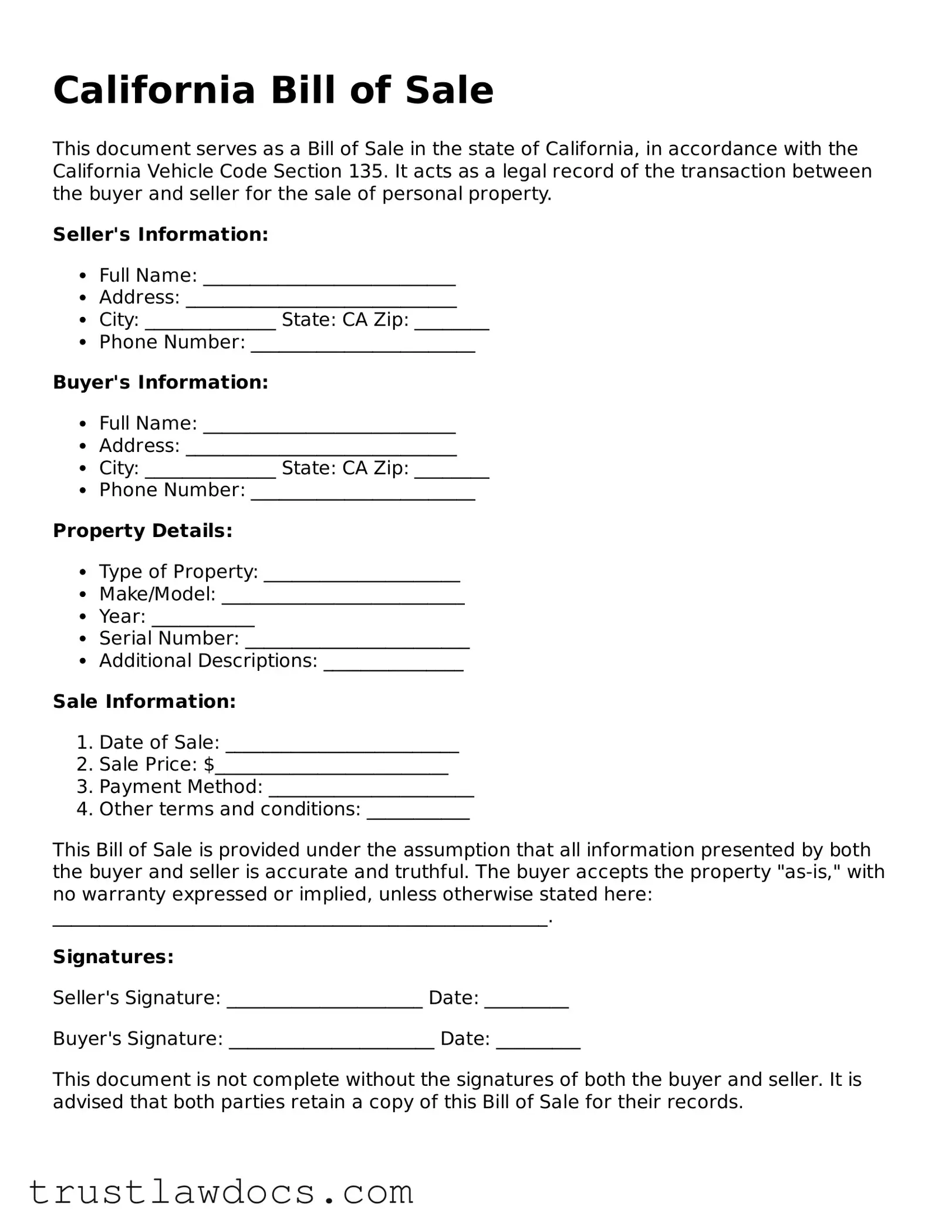Filling out a California Bill of Sale form is a critical step in the process of buying or selling property, but it's also a process where many people make mistakes. These errors can range from minor oversights to major issues that affect the legality of the transaction. Understanding these common pitfalls can help parties avoid them, ensuring a smooth and lawful transfer of ownership.
The first mistake is not providing complete information about the seller and the buyer. The form requires full legal names, addresses, and, in some cases, identification numbers. Leaving these sections incomplete or inaccurately filled can lead to questions about the legitimacy of the document, potentially causing issues in the ownership transfer process.
Another error is failing to accurately describe the item being sold. This description should include make, model, year, color, size, and any identifying numbers or marks. An incomplete or vague description may lead to disputes or confusion about what was actually sold, especially in cases where the item is not immediately transferred or is one of multiple similar items.
A third common mistake is not specifying the sale date and price. The date of sale establishes when the ownership changeover takes place, and the price is crucial for tax purposes. Without these details, legal ownership and responsibility for the item can be ambiguous, potentially leading to disputes or complications in the future.
People often overlook the necessity of including any warranties or "as is" statements. Clearly stating the condition in which the item is sold protects both the buyer and the seller. Without this clarification, the seller could be liable for problems that arise after the sale that they did not anticipate being responsible for.
Another frequent oversight is not obtaining signatures from all parties, including witnesses or notaries, if applicable. Signatures provide proof of the agreement and its terms, making the document a binding legal agreement. Failing to have the form properly signed can render it useless in resolving disputes or proving ownership.
Additionally, some individuals make the mistake of not checking state-specific requirements. California, like many states, may have particular stipulations, such as requiring a notary or additional documentation for certain types of sales. Ignorance of these requirements can result in the bill of sale not being recognized as a legal document.
Last but not least, not keeping a copy of the signed bill of sale is a mistake that can have serious repercussions. This document serves as a receipt and a legal record of the transaction. Without it, proving ownership or the terms of the sale can become nearly impossible, particularly in legal or tax-related matters.
